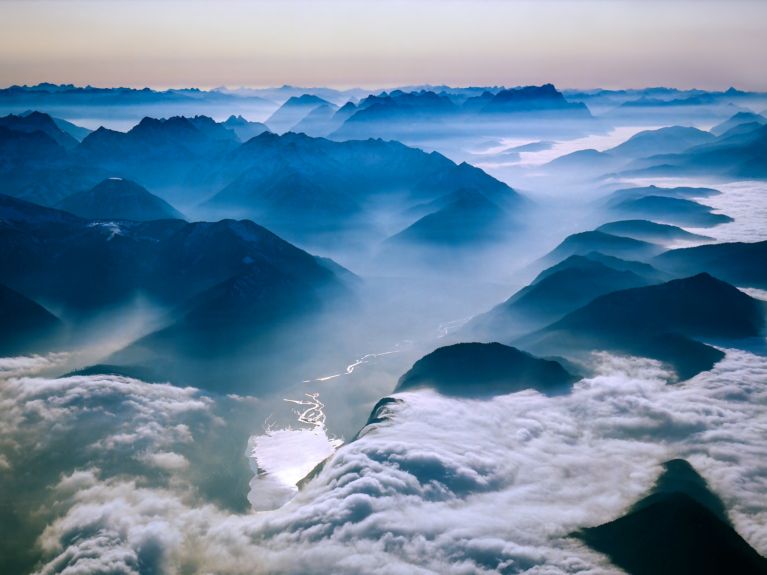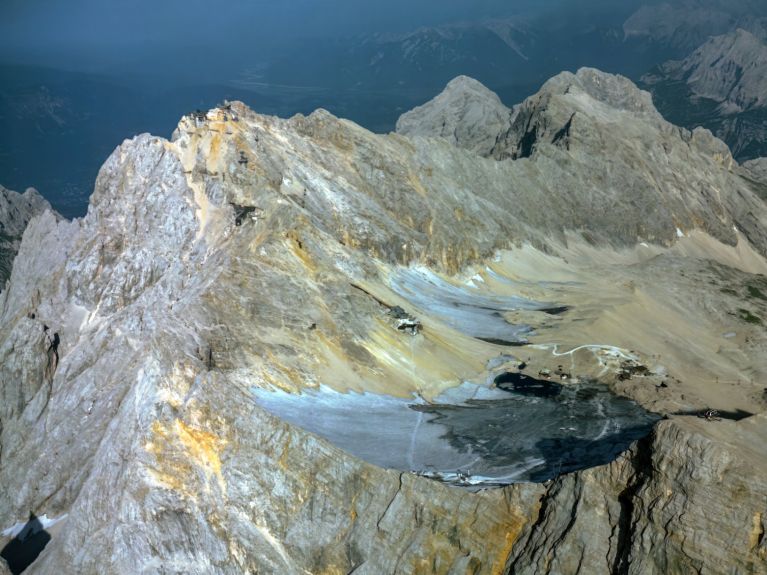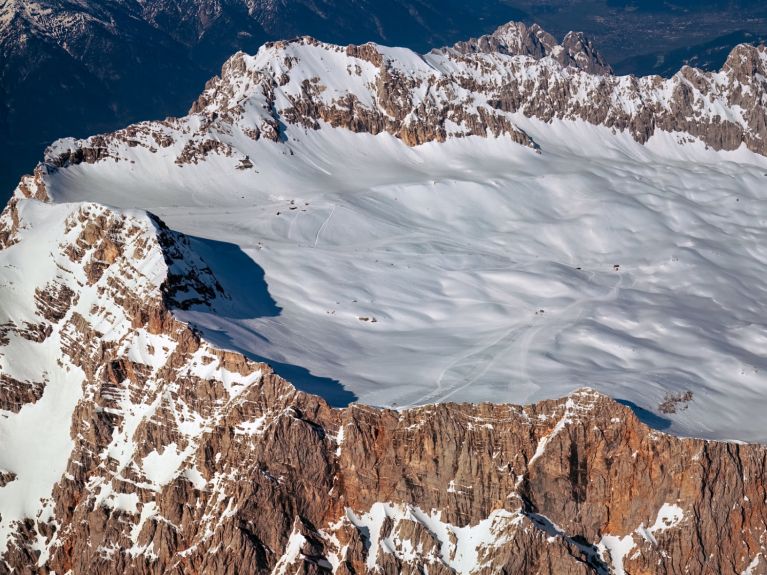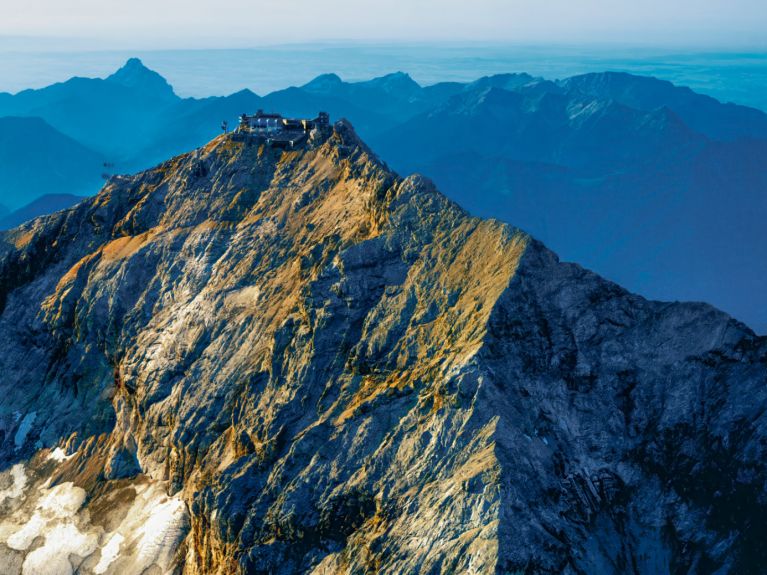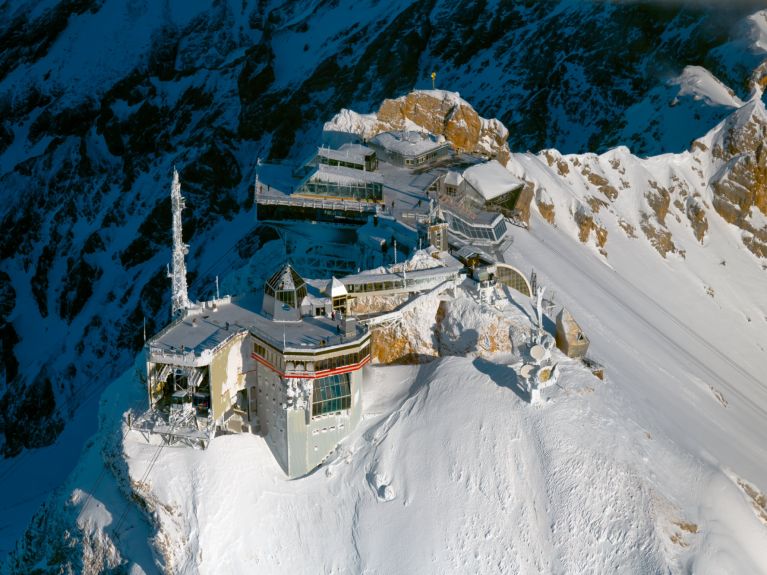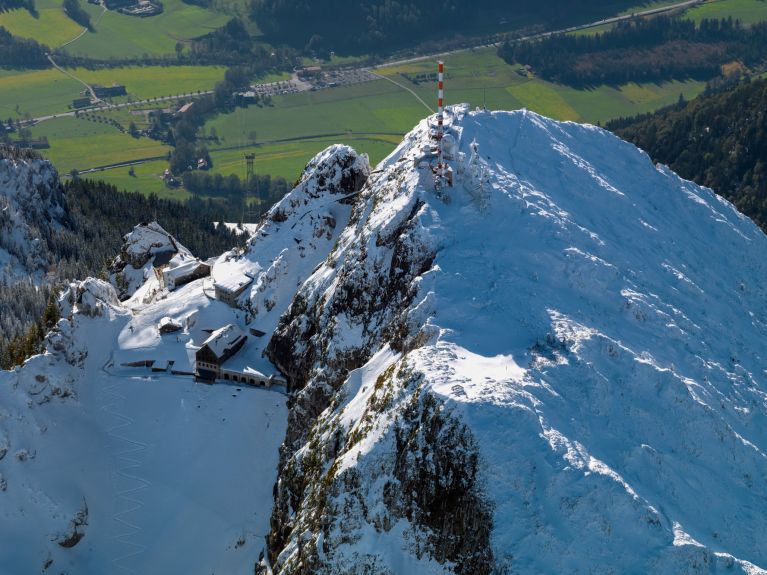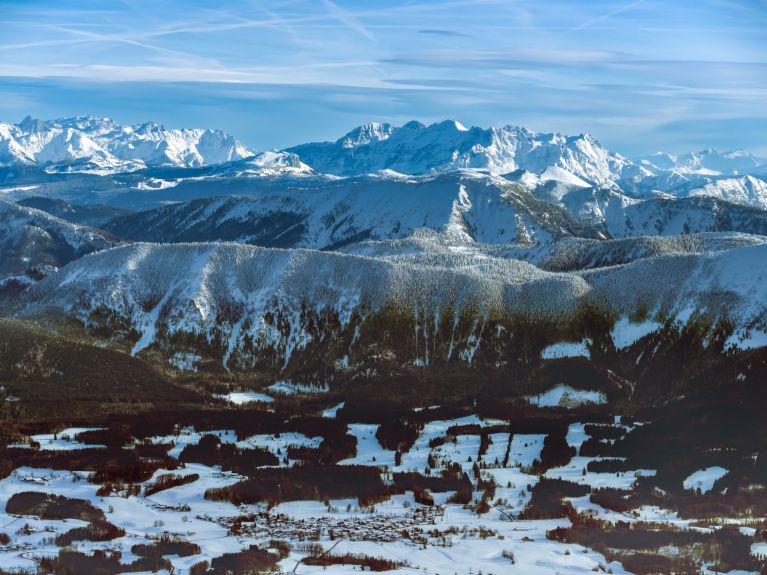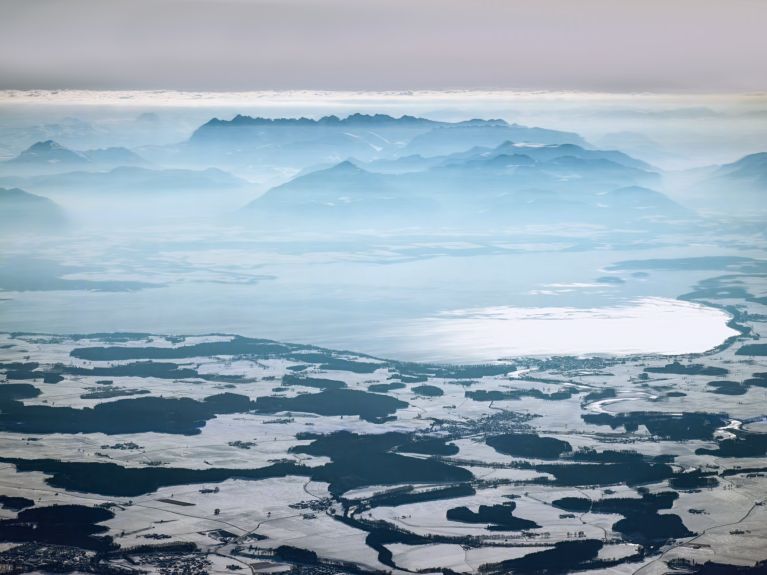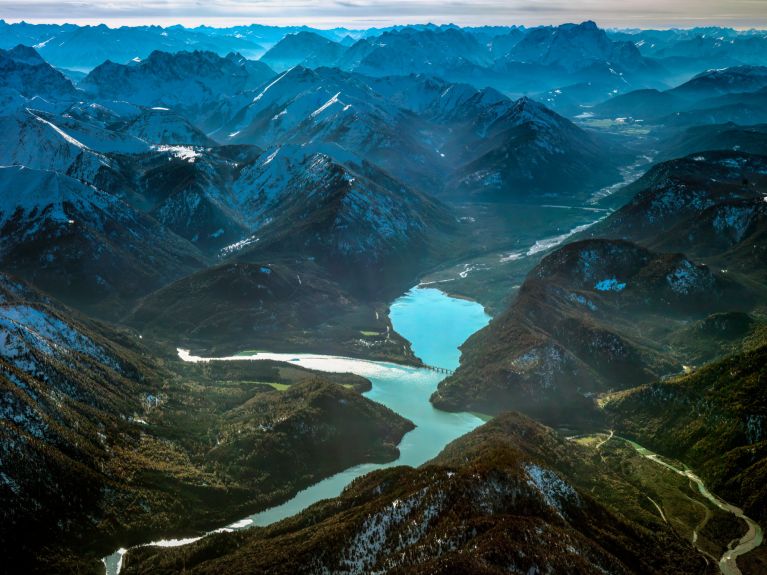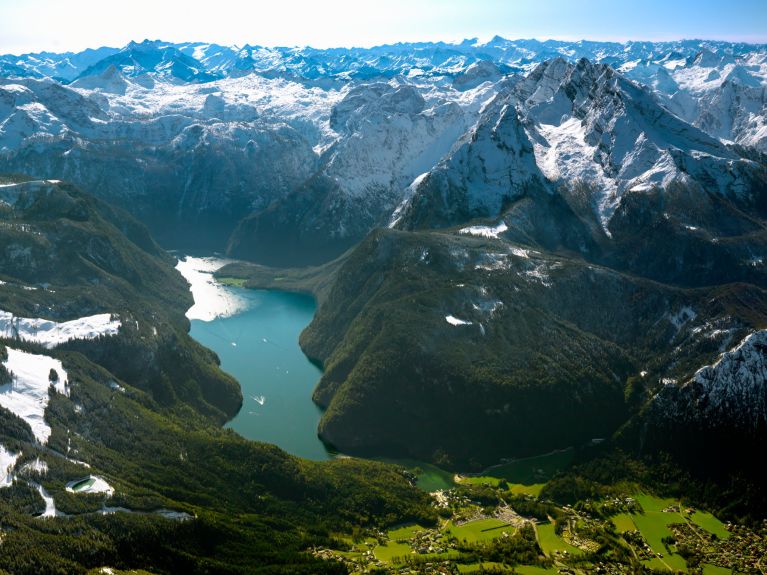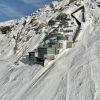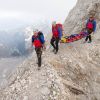Six fascinating facts about the German Alps
Discover the highest mountains, picturesque lakes, spectacular cable cars – and find out the most important facts about Germany’s high mountain range
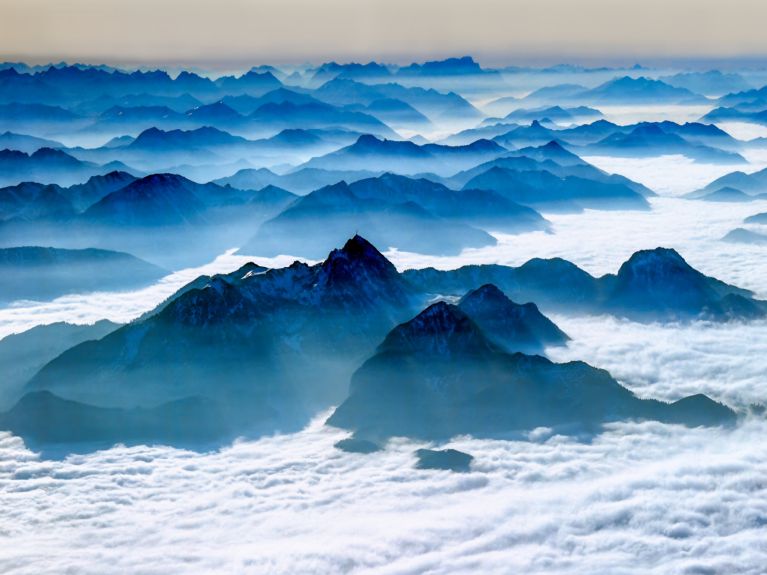
1. The highest mountains
At 2,962 metres, the Zugspitze is the highest peak in Germany. After the summits of the Zugspitze massif, the remote and little-known Hochwanner (2,744 m) ranks second, followed by the dramatic Watzmann (2,713 m) in third place.
2. The most beautiful lake in the German Alps
At the foot of the Zugspitze, Lake Eibsee enchants visitors with its crystal-clear water and breathtaking scenery. Many other mountain lakes such as Lake Königssee offer unique views in the heart of nature.
3. Spectacular cable cars
Innovative cableway systems like the modern Zugspitze cable car up Germany’s highest mountain and the impressive Nebelhorn cable car offer breathtaking panoramic rides over the Alps – but without leaving you out of breath.
4. Majestic eagles and nimble climbers
The German Alps are home to rare species such as the majestic golden eagle and giant griffon vultures. Agile chamois and powerful ibexes live on the steep slopes. In burrows beneath the mountain meadows there are cute marmots.
5. Picturesque alpine pastures
Alpine farming has shaped the landscape of the Alps for centuries and helps preserve cultural heritage through traditional cheese-making. The mountain huts are only used in summer – many offer food and rest stops for hikers.
6. Winter sports with a great tradition
Modern ski resorts, top-quality pistes and innovative lifts make the German Alps a hotspot for winter sports enthusiasts. The Kandahar downhill run in Garmisch is world-famous – one of the most demanding race tracks in Europe.
Gerhard Launer, photographer
Gerhard Launer is one of the best-known German aerial photographers. Over the course of his long career he has photographed almost every corner of Germany from the air. He took all the photographs of the Alps featured in this article.
